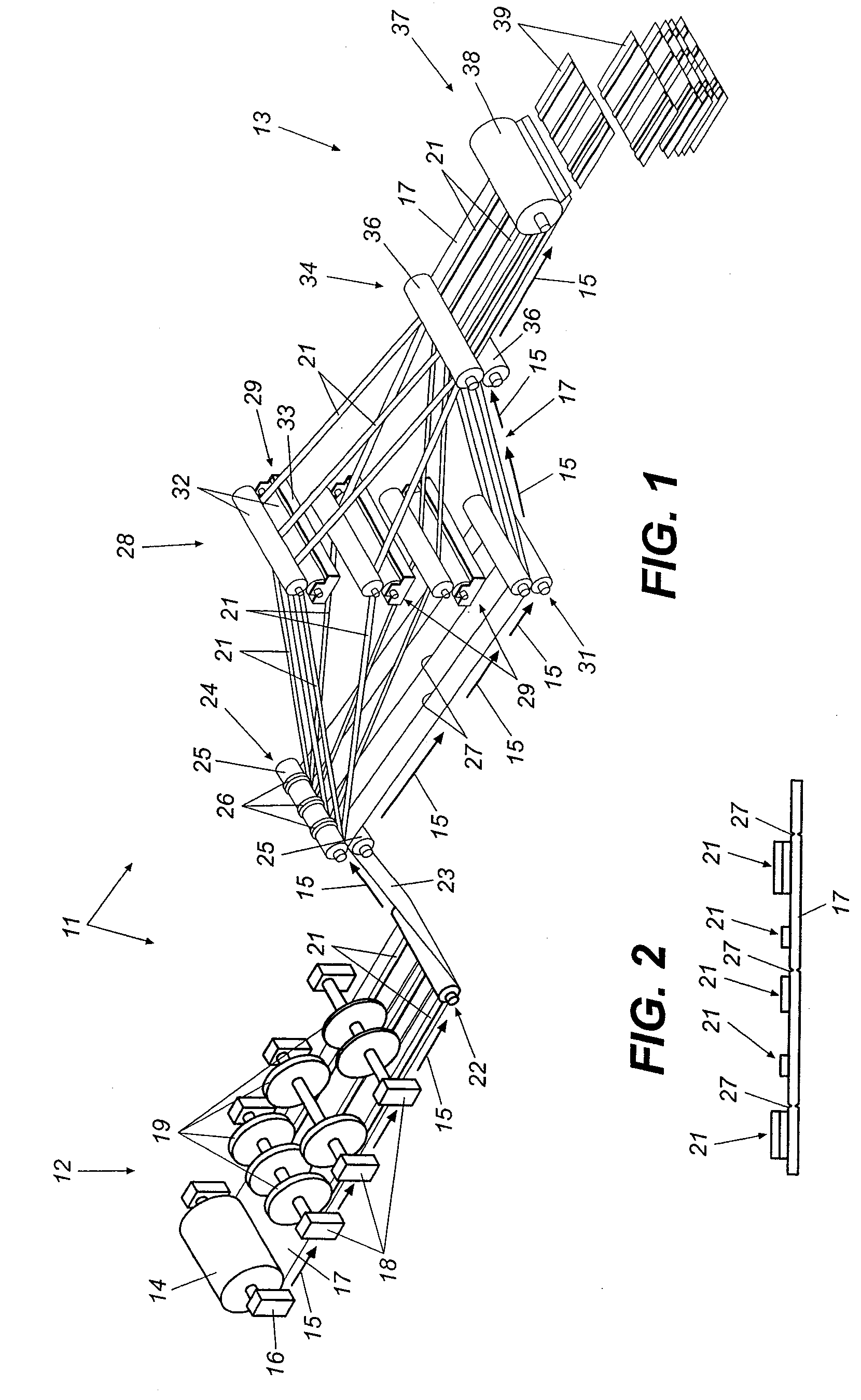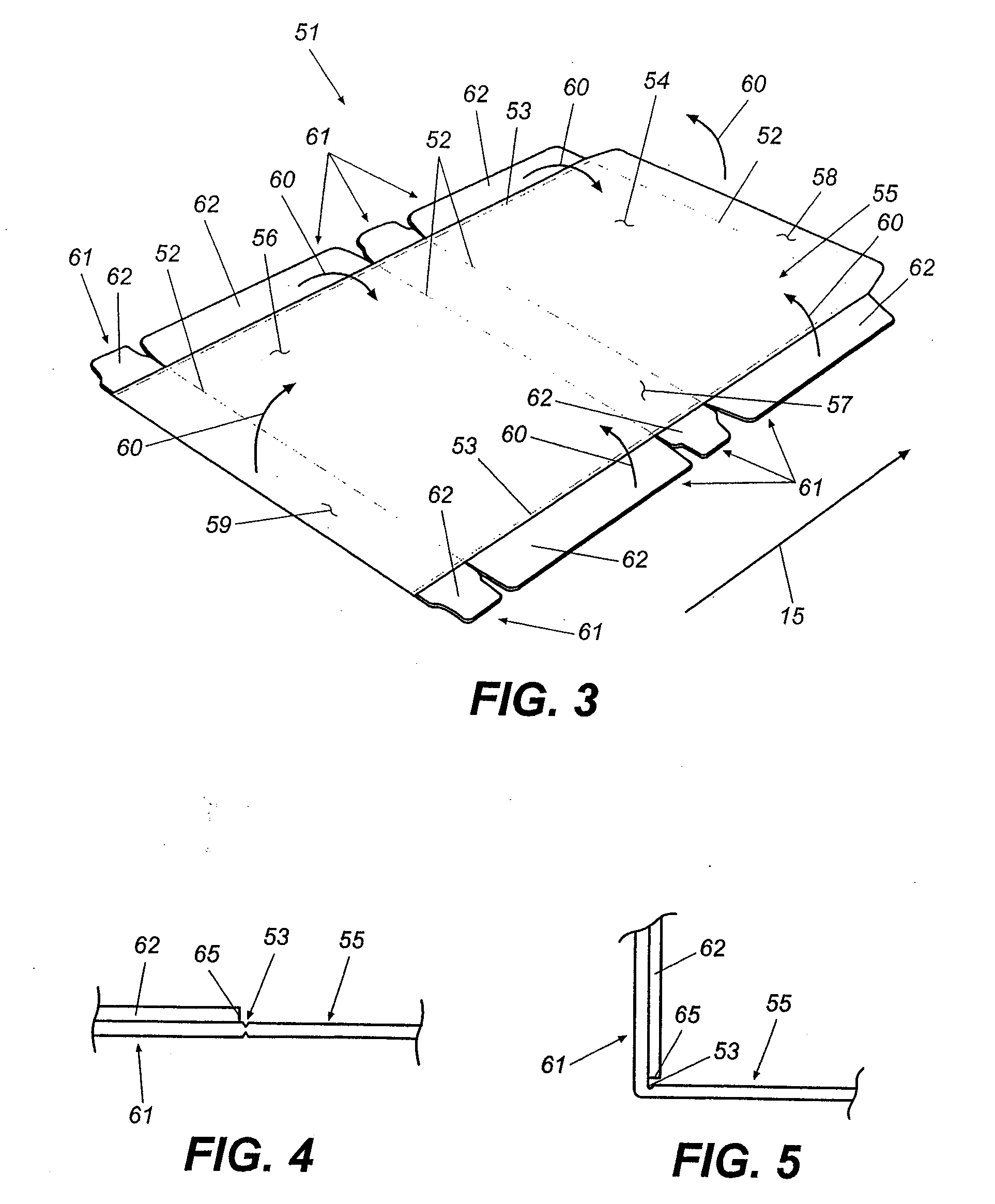Paperboard Cartons With Laminated Reinforcing Ribbons And Transitioned Scores And Method Of Making Same
- Summary
- Abstract
- Description
- Claims
- Application Information
AI Technical Summary
Benefits of technology
Problems solved by technology
Method used
Image
Examples
Embodiment Construction
[0039] As mentioned above, carton blanks may be provided in the form of pre-glued knocked down sleeves or completely flat sheets depending upon the type of packaging operation in which they are to be used. The carton blank shown in FIG. 3 is of the former type and typically is partially folded and glued at the carton manufacturing location and shipped to a packager in the form of a knocked down sleeve. This sleeve, then, is erected by the packaging machinery into an open-ended carton into which product is inserted before the carton is sealed shut. This type of carton typically is used in most beer and soft drink bottling plants. The carton shown in FIG. 8, on the other hand, typically is formed from a carton blank that is shipped completely flat, folded around product in the packaging machine, and glued shut. This latter type of carton blank is different than the former in that the gluing of the carton to form a sleeve is done at the product production and / or packaging facility rath...
PUM
| Property | Measurement | Unit |
|---|---|---|
| Size | aaaaa | aaaaa |
| Adhesion strength | aaaaa | aaaaa |
| Width | aaaaa | aaaaa |
Abstract
Description
Claims
Application Information
 Login to View More
Login to View More - R&D
- Intellectual Property
- Life Sciences
- Materials
- Tech Scout
- Unparalleled Data Quality
- Higher Quality Content
- 60% Fewer Hallucinations
Browse by: Latest US Patents, China's latest patents, Technical Efficacy Thesaurus, Application Domain, Technology Topic, Popular Technical Reports.
© 2025 PatSnap. All rights reserved.Legal|Privacy policy|Modern Slavery Act Transparency Statement|Sitemap|About US| Contact US: help@patsnap.com



